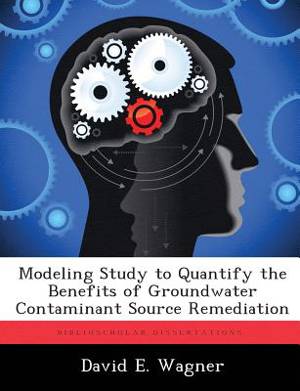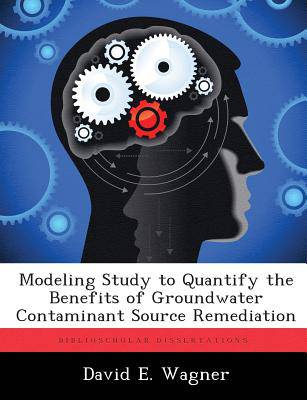
- Afhalen na 1 uur in een winkel met voorraad
- Gratis thuislevering in België vanaf € 30
- Ruim aanbod met 7 miljoen producten
- Afhalen na 1 uur in een winkel met voorraad
- Gratis thuislevering in België vanaf € 30
- Ruim aanbod met 7 miljoen producten
Zoeken
Modeling Study to Quantify the Benefits of Groundwater Contaminant Source Remediation
David E Wagner
Paperback | Engels
€ 54,45
+ 108 punten
Omschrijving
The purpose of this research was to quantify the benefits of groundwater contaminant source remediation by using a model to simulate how reduction of source mass was related to reduction of contaminant concentration at a receptor. Specifically, this thesis sought to answer three research questions: (1) how are contaminant source mass reduction and reduction of mass flux leaving the source-zone related; (2) how can we quantify the effect of the important natural attenuation processes that act upon the dissolved contaminant as it travels from the source zone to downgradient receptors, and (3) under specified site conditions, what is the maximum contaminant flux leaving a source-zone that natural attenuation can effectively degrade to achieve a concentration goal at a receptor. The research questions were answered through a comprehensive literature review and the use of Groundwater Modeling Software (GMS 5.1) to model an actual tetrachloroethene (PCE) contaminated site at Dover AFB, Delaware. Using actual hydrogeologic and contaminant conditions at the site, a power function was applied to determine the relationship between source mass reduction and contaminant flux reduction, while the advection-dispersion equation, with biodegradation source/sink terms to model PCE decay coupled to daughter product production, was utilized to model the effects of natural attenuation on dissolved chlorinated ethene fate and transport.
Specificaties
Betrokkenen
- Auteur(s):
- Uitgeverij:
Inhoud
- Aantal bladzijden:
- 118
- Taal:
- Engels
Eigenschappen
- Productcode (EAN):
- 9781288308309
- Verschijningsdatum:
- 16/11/2012
- Uitvoering:
- Paperback
- Formaat:
- Trade paperback (VS)
- Afmetingen:
- 189 mm x 246 mm
- Gewicht:
- 226 g

Alleen bij Standaard Boekhandel
+ 108 punten op je klantenkaart van Standaard Boekhandel
Beoordelingen
We publiceren alleen reviews die voldoen aan de voorwaarden voor reviews. Bekijk onze voorwaarden voor reviews.











